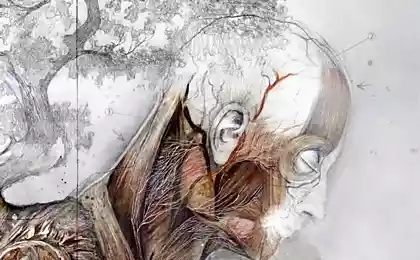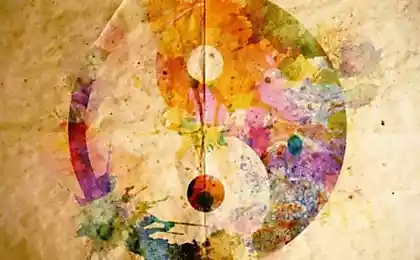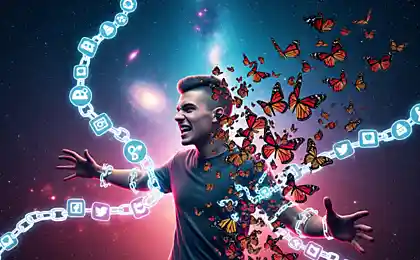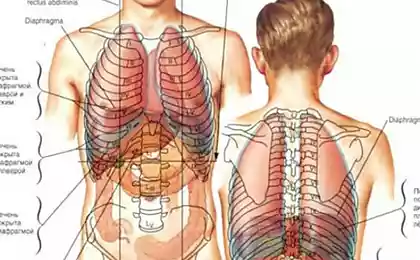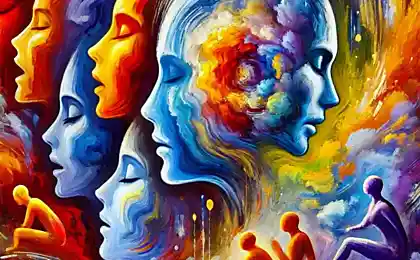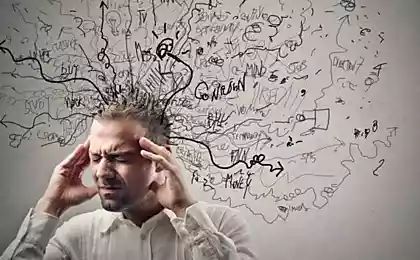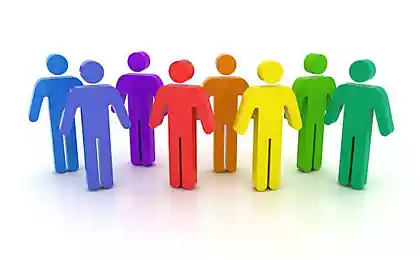170
Digital rage: how to deal with anger from social media and news
Digital anger negatively affects your mental health, so it’s worth remembering a few methods to help you cope with it.
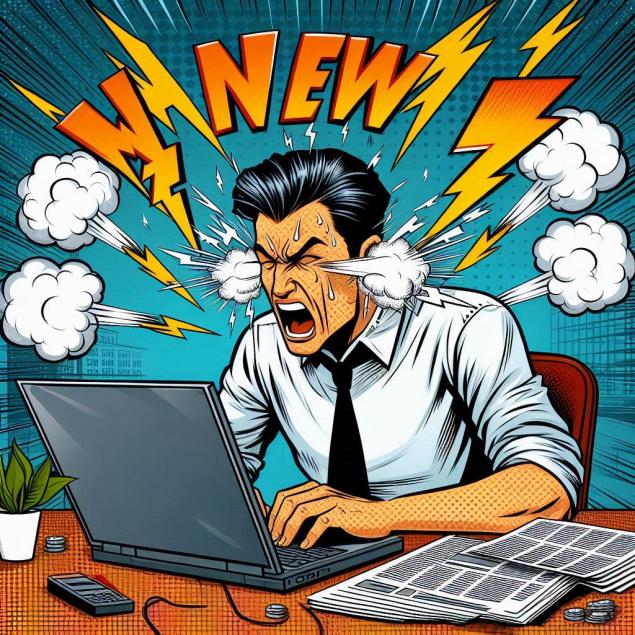
Anna woke up Saturday morning and, as usual, reached for the phone. Fifteen minutes into the news feed, she was already seething with rage. Another political scandal, an environmental disaster, an argument in the comments under a friend's post - all this mixed into a toxic cocktail of emotions that spoiled her all day. Familiar story? Welcome to the age of digital rage.
Modern man consumes more information every day than his ancestors in their lifetime. According to a University of California study, the average social media user checks their phone 96 times a day, and each session lasts an average of 7 minutes. During this time, the brain receives a huge dose of emotionally charged content that activates ancient survival mechanisms, causing us to respond to digital threats as real.
73%
People experience increased levels of stress after watching negative news online
The Anatomy of Digital Anger
Digital anger isn’t just annoyance at bad news. This is a complex psychophysiological reaction, which is formed under the influence of the features of modern media. Social media algorithms are specifically set to maximize user engagement, and this is best achieved through emotional content — especially one that causes outrage or fear.
The mechanism of formation of digital anger:
Dopamine loop Each feed update activates the brain’s reward system, making it dependent on constantly checking for new information.
The negative effect The human brain is more evolved to respond to threats and negative information.
Echo chambers Algorithms show content that confirms our beliefs, which increases the polarization of opinions.
Dr. Adam Alter of New York University in his research showed that the digital environment creates ideal conditions for the formation of compulsive behavior. Infinite tape, push notifications and variable ratio reinforcement work just like slot machines in a casino.
The Physiology of Digital Stress

When we see an outrageous post or disturbing news, our bodies trigger a cascade of stress responses. The adrenal glands release cortisol and adrenaline, the heart rate increases, the muscles tense. The problem is, unlike a real threat to escape or fight, a digital threat remains with us all the time.
Consequences of chronic digital stress:
Constant activation of the stress system leads to sleep disorders, problems with concentration, increased anxiety and even depression. A study by the Royal Society of Public Health found that Instagram and Facebook had the most negative impact on young people’s mental health.
Strategies to Combat Digital Anger
Understanding the mechanisms of digital anger is the first step to overcoming it. Knowledge without practical action is useless. Consider proven strategies to help you regain control of your emotions in the digital space.
Rapid response techniques
- Rule 6 seconds This is how long it takes for adrenaline to leave the bloodstream. When you feel anger, count to ten and take a deep breath.
- STOP Method Stop (stop), Take a breath (take a breath), Observe (watch your feelings), Proceed (act consciously).
- Physical switching Put down the device and do 10 squats or push-ups. Physical activity will help burn stress hormones.
- Grounding technique 5-4-3-2-1 Name 5 things you see, 4 things you hear, 3 things you can touch, 2 things you can smell, 1 things you can taste.
Long-term strategies for managing digital consumption
Michael, a computer programmer from San Francisco, tells his story: I noticed that after an hour on Twitter, I had a headache and became irritated with loved ones. So I decided to install an app to track screen time. It turned out that I spend more than 4 hours a day on social networks! It was a shock. Michael started using digital hygiene techniques and noticed a significant improvement in mood and productivity a month later.
Creating digital boundaries
Time frame Set specific hours to check social media and news. For example, only after breakfast and before dinner.
Physical boundaries Create zones without gadgets: a bedroom, a dining table, a workplace for creative tasks.
Content filters Use the functions “hide” and “not interesting” in social networks, unfollow accounts that cause negative emotions.

Practices of Conscious Content Consumption
Mindfulness is not a buzzword, but a proven scientific method of dealing with emotions. Dr. John Kabat-Zinn, founder of the mindfulness-based stress reduction program, defines it as “attention to the moment without judgment.”
There is space between stimulus and response. In this space lies our freedom and the power to choose our reaction. In our response lies our growth and our freedom. - Victor Frankl.
When applied to digital consumption, this means creating a pause between receiving information and the emotional response to it. Instead of an automatic swipe and like, ask the questions: “How do I feel now?”, “How does this information affect my condition?”, “Do I really need to know this?” ?
Algorithms vs. humans: How attention manipulation works
Tristan Harris, a former Google designer and founder of the Center for Humane Technology, reveals the mechanisms IT giants use to capture our attention. These techniques are based on the principles of behavioral psychology and neuroscience.
Attention-grabbing techniques:
Intermittent variable rewards Unpredictable rewards (likes, comments) activate the dopamine system more than predictable rewards.
Social approval The need for social approval is used through systems of likes, reposts and comments.
Fear of missing out (FOMO) Fear of missing something important makes you constantly check for updates.
Reciprocity When someone likes your post, there is a social obligation to reciprocate.
Digital Detox: Myth or Necessity?
The complete abandonment of digital technologies in the modern world is impossible and impractical. However, periodic digital detoxes can be helpful in restoring mental health. A University of Copenhagen study found that participants who quit Facebook for a week showed significant improvements in life satisfaction scores and reduced stress levels.
Digital Detox Options:
- Micro-detox 1-2 hours a day without screens, for example, in the morning after waking up or before going to bed.
- Daytime detox One day a week without social media or news sites.
- Selective detox Avoiding specific platforms or types of content that cause the most stress.
- Replacement activities Reading books, walking, hobbies, live communication with friends.
Building healthy digital habits
Changing habits is a process that takes time and persistence. According to University College London, it takes an average of 66 days to form a new habit. The key to success is to start small and gradually increase complexity.
21.
Minimum time to start forming a new habit
A step-by-step plan for building healthy digital habits
Week 1-2: Awareness
Install an app to track screen time. Keep an Emotional Diary: Write down how you feel before, during, and after using social media. This will help identify the triggers and patterns of digital anger.
Week 3-4: Limitations
Set time limits on problematic applications. Start by reducing time by 15-20% of your current level. Remove notifications from social media and news apps.
Week 5-6: Replacement
Find alternative activities for the time you used to spend on mindless scrolling. This can be reading, exercise, meditation or hobbies.
Week 7-8: Fixing
Implement digital hygiene rituals: screenless morning hours, an hour before bedtime, weekly digital detox days.
Tools for controlling digital consumption:
Annexes: Freedom, Moment, RescueTime, Forest – to track and limit screen time.
Browser extensions: News Feed Eradicator, StayFocusd, BlockSite – to block distracting sites.
Device settings: Use the built-in Screen Time (iOS) or Digital Wellbeing (Android) features.
When to seek professional help
Sometimes, digital anger becomes a symptom of more serious mental health problems. If you notice the following signs, you should consult a specialist:
Alert signals:
• Obsessive thoughts about reading online that interfere with work and relationships
• Physical symptoms: headaches, sleep problems, muscle tension
• Aggressive behavior in real life after being on social media
• Inability to control time spent online despite wanting to cut it
• Social isolation and preference for virtual communication
The Future of Digital Well-Being
Awareness of the digital impact on mental health is growing among both users and technology developers. Large IT companies are beginning to implement features aimed at maintaining the digital well-being of users. However, the primary responsibility for our mental health in the digital age lies with each of us.
Technology is not neutral. They create the world we live in and the way we live in it. It’s important to consciously choose which technologies we let into our lives. - Sherry Turkle, MIT
Digital literacy of the 21st century includes not only the ability to use technology, but also the ability to protect your mental health from its negative impact. This is a skill that becomes just as important as the ability to read or count.
In conclusion, it’s important to remember that digital technologies are tools, and like any tool, they can help or harm. The choice is ours. By learning how to manage our digital habits, we can take full advantage of modern technology without sacrificing our mental health and quality of life.
Glossary of terms
The algorithm A set of rules and commands by which a computer program determines what content to show to a user on social networks or search engines.
dopamine A neurotransmitter responsible for feelings of pleasure and motivation. Plays a key role in the formation of dependence on social networks.
cortisol Stress hormone produced by the adrenal glands in response to a threat or stressful situation.
Digital detox A period of conscious restriction or complete abandonment of the use of digital devices and social networks.
Echo chamber Information environment in which a person receives only information that confirms his existing beliefs and points of view.
FOMO (Fear of Missing Out) Fear of missing out on something important, social anxiety that others may have more interesting experiences in your absence.
Mindfulness (mindfulness) The practice of focusing on the present moment, becoming aware of your thoughts, feelings and sensations without trying to change or condemn them.
Why we are attracted to people with whom there is no future
Oncologist at home: quality medical care in a familiar environment




